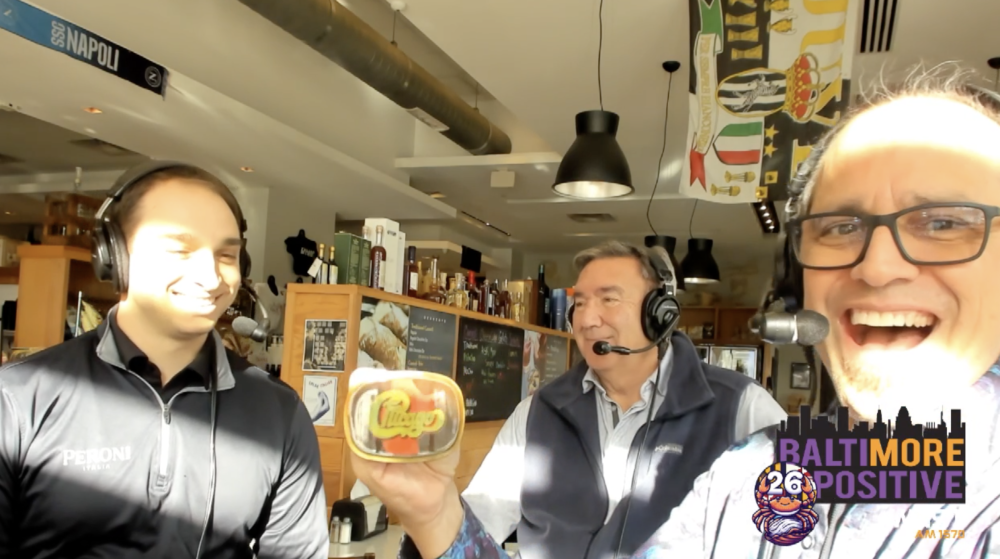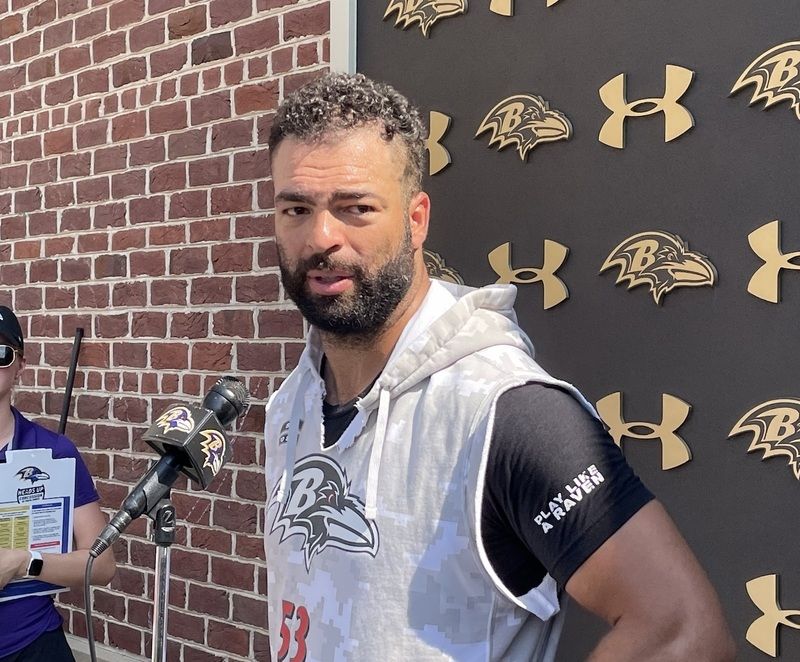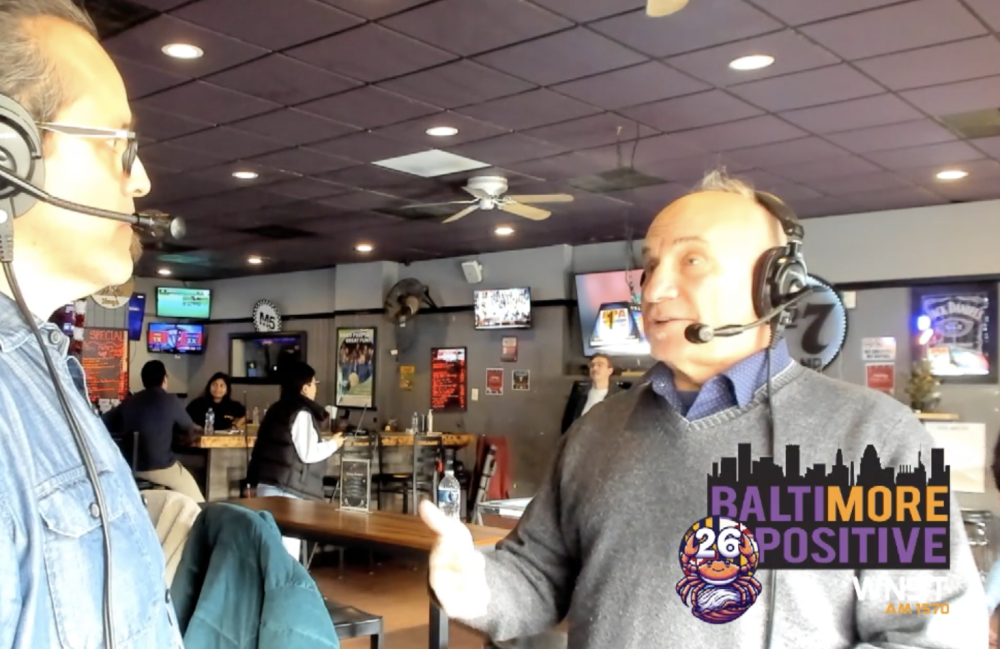Newsome saw all of this humanity and care for players because that was the way Modell ran the franchise – truly like a family. Newsome saw how this transformed lives in his locker room and he saw friends in the NFL who didn’t have it so good in their organizations as players.
Like every professional athlete who is still blessed with enough good fortune to be playing in his thirties, Newsome was considering life after football and couldn’t imagine such a life. When his career was winding down it was widely speculated that he would return to Tuscaloosa in some formal capacity, serving the Crimson Tide that he loves so much. Make no mistake about it — even 35 years after parting ways with Bear Bryant, everything about the University of Alabama remains a passion for Newsome.
Newsome sought out the person he had the most respect for in Cleveland: his owner Art Modell, who often treated Newsome more like a son than a key employee. Modell told him that there’d be a home in the Browns organization if he wanted to continue a post-playing career as a scout or a coach but that he should take his time and experience different posts to make sure that life in the NFL off the field was right for him.
Despite his stature in Cleveland and his celebrity life in the 1980s, Newsome felt a special bond with Modell that was inexplicable to some, but the two men bonded over the years and their relationship grew. Modell knew of Newsome’s hard life in the south as a gifted African-American athlete in a deeply segregated community and world. Modell had personally talked to Bear Bryant in Tuscaloosa and everything that was promised by the legendary coach in Alabama in the spring of 1978 was delivered to the Browns in Northern Ohio. Bryant called Newsome “the greatest end in Alabama history and that includes Don Hutson. A total team player, fine blocker, outstanding leader, great receiver with concentration, speed, hands.”
Now, during his final act with the Browns, when most players find another life away from the game, Newsome sought out Modell for career advice and ways to stay a part of what he loved.
“Art knew that Ozzie wanted to stay in football,” Byrne said. “Art came from a different generation, but they had more in common than you’d think. Art’s family went broke. He was a high school dropout. He knew the hard side of life. Ozzie grew up in the segregated South where he couldn’t drink from a fountain at a gas station and couldn’t eat in many restaurants. He and Art had common ground – a hard youth – and they had an appreciation for how good their lives were.”
But would Ozzie buy into his new life as a football scout or coach or whatever nebulous role that Modell could carve out for him as a legend working in relative obscurity amongst what used to be his bosses?
“There are lots of long hours in dark rooms alone if you want to be a football coach or a scout,” Byrne said. “I’d seen former players think they wanted to do it until they realized what kind of job it really is and the time that’s necessary to do it the right way.”
In early 1991 Newsome joined newly-appointed head coach Bill Belichick’s staff as an assignment scout, which entailed essentially anything he was asked to do to evaluate a football player. And when Belichick is your boss there is no down time.
“He started in Cleveland by watching film and breaking down games for Bill,” said former tight ends coach Pat Hill, who came to Baltimore with the Browns in 1996 and later was a longtime head coach at Fresno State. “Here was this Hall of Fame player writing down the number and position of every player on every play and cutting up film, doing the job of a 20-year old. Hey, you don’t become the owner without being a dishwasher first. And Ozzie never complained.”
Quite the opposite, actually, he loved it and couldn’t get enough of it. The harder the hardened Belichick pushed, the more Newsome produced — just like he did on the field with the Browns.
Newsome helped with game planning and would often work all night and then present thorough studies in the morning. Every Tuesday morning he’d work the defensive game planning with Belichick and every Tuesday night he’d be with offensive coaches Kirk Ferentz, Gary Tranquill, Steve Crosby and Mike Sheppard installing their system.
“When I was asked to stay within the organization, I just asked Mr. Modell [that] I wanted to stay on the football side, and he allowed that,” Newsome said. “But, the preparation [for the general manager’s role] came from being around [former Browns GM] Ernie Accorsi and [Patriots head coach] Bill Belichick, and being able to listen to those guys for the first two or three years and to gain as much education as I could get. We know how great Ernie was, and you see how good Bill has been, but being able to learn from both of those guys really helped prepare me.
“The other thing that I think was so beneficial is that whole group that came to Baltimore from Cleveland, me, [former Browns/Ravens personnel staffer] Phil [Savage], ‘Schwartzy’ [Jim Schwartz], Kirk Ferentz, Mike Sheppard, Pat Hill … We were all just slappies together. We had all worked together, so when we moved over, it was like, ‘OK, you know what? I have a title, but I’m just one of you guys. Let’s go to work.’ And, it was fun.”
What Newsome learned from Belichick was the Parcells philosophy of football: get the biggest, fastest guys, coach them up and we’ll win. They’ll beat the tougher, smaller guys. Belichick, as is now his reputation, challenged everyone in the building every day and often times in no flattering terms.
But, Newsome never flinched. No one was going to outwork Ozzie Newsome.
“His work ethic was off the charts,” said Schwartz, a Baltimore native who left the Ravens after the 1998 season to become a long-time defensive coordinator for Jeff Fisher in Tennessee and is currently the head coach of the Detroit Lions. “Seeing a guy with those credentials work like that really taught me what it was going to take to make it in this business. I was young and Ozzie was a legend. But every day he was in there grinding 12 to 15 hours a day with all of the scouts, cutting up tape, doing whatever he could to try to help the team win.”
Strangely enough, there’s this deep-seated spot in Newsome’s psyche that allows him to be self-portrayed as the underdog. Like every athlete who wasn’t taken with the first pick in the draft, there’s a burning desire to show that they should’ve been taken higher. It’s been working for Newsome since that first day he changed schools as a 10-year old in Muscle Shoals.
Many overachievers lack talent. Not Ozzie. His is a case of having the talent and knowledge to begin with and then refining and improving all aspects of his system. His peers and co-workers are effusive in describing his work ethic and steady determination – at 57 years of age and with the achy knees of a 13-year NFL veteran, he’s still on the treadmill in the Ravens’ weight room as much as three times a day during the season.
In 1995, Modell began his dalliances with John Moag and the Maryland Stadium Authority. Word of the Browns’ move to Baltimore leaked in late October and the move was made official in early November. Newsome was the most recognizable face in the franchise and spent the better part of two months coming to work every day at the Browns’ complex in Berea, Ohio amidst threats, pickets, and ugliness. When it ended on December 17, 1995 with Cleveland Stadium being torn apart by the Dawg Pound fans, Newsome knew he was coming to Baltimore with Modell but had no idea exactly what his role would be with the besieged franchise.
The 1995 Browns finished 5-11 after a 3-1 start and, like most players, staffers and fans in Cleveland, Belichick didn’t handle Modell’s decision very well and the sheer volume of noise, distractions, anger, media coverage, and venom were insurmountable.
Belichick spent five seasons as the head coach of the Cleveland Browns, ending his run with an unimpressive 36-44 record. Modell fired him on February 15, 1996 and hired long-time NFL head coach Ted Marchibroda to come back to Baltimore, where he led the Colts in the mid-1970s during what became known as “the Bert Jones era.”
The job in Baltimore was completely different than any other in recent NFL history. The team had no logo, no colors, no name, and no history but still had a salary cap, and almost no liquidity. There were a mix of some decent players who were a year removed from an 11-5 record and a playoff berth during the 1994 season, but many of the players were worn out from the siege of Berea and the outraged and angry fans in Cleveland. Many wanted out of the franchise or just didn’t understand all that was going on around Modell – on or off the field.
There were lawsuits, nasty threats and plenty of confusion at the unprecedented nature of this sudden franchise abduction from Cleveland. The NFL wasn’t happy. Others owners weren’t happy. And at the time, not even everyone in Baltimore was happy. Many locals were displeased with the methodology and the ‘eye for an eye’ ideology of stealing a team from another jilted, football-rich city like Cleveland.
As Art Modell would often quip, “I didn’t move to Baltimore for the crab cakes.” He moved because he was broke.
“Art was very cognizant of the fact that Belichick was not proud of what was going on, and he wasn’t the right guy to come with the franchise to Baltimore,” said one person close to Modell during the move from Cleveland. “And Art simply decided that Ozzie has ‘it’ – that ability to put a team together. Art knew he didn’t want to bring Bill because it was a sales job in Baltimore. Bill couldn’t help him sell football in Baltimore because, first he didn’t ever connect with fans or local businesses in Cleveland, and second he was still pissed off about the move in general and what it did to the 1995 team. For Belichick it was all a giant hassle and didn’t help him win football games.”
Marchibroda was less than a month removed from coming a tipped ball away from going to the Super Bowl as the head coach of the Indianapolis Colts with quarterback Jim Harbaugh and he knew Baltimore. And, more importantly for Modell, who was trying to sell personal seat licenses (PSL’s) in a new downtown stadium along with selling a new NFL brand, the people of Baltimore knew him as a winning head coach.
Modell, who always considered himself the acting “general manager” of the Browns, decided that his then-unnamed team moving forward in Baltimore would be led Marchibroda on the field and Newsome on the personnel side as Vice President of Player Personnel.
What they found in the Charm City, along with the tasty crab cakes, was a scorched earth football situation and city that was madly in love with Camden Yards, the Orioles, Cal Ripken, and baseball.



























